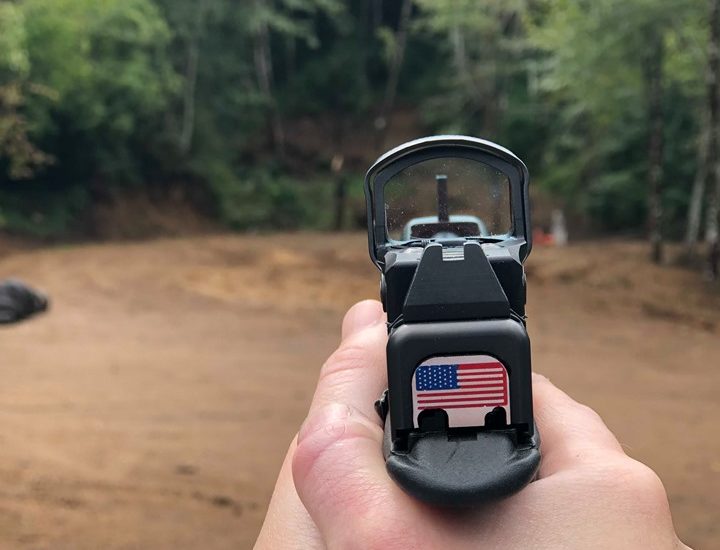Why didn’t the police just shoot the suspect in the leg?

And other uninformed questions
Every year across the U.S. this question gets asked. Sometimes those asking the question sincerely don’t know and want to understand. Other times it gets asked in a critical opinionated way, almost always made out of ignorance or bias.
Legs shots can kill
You have all sorts of veins and all sorts of arteries in your legs. The legs are the place where the largest artery in the body bifurcates (splits up) and runs along side the largest bone in the body which is held under tremendous pressure by the largest muscles in the body.
A gunshot wound to your femur bone causes things to shatter! When bones shatter near veins and arteries, they are sliced open and bleed quickly. Time is short if this happens.
Responsible for every round
Police are responsible for every round that exits the muzzle of their firearm. Everything that goes down range has to be accounted for.
Center mass of the human body is the least likely area to have over penetration and continue down range. The center mass of a body is the slowest moving component. They head, arms, and legs move very quickly.
Legs and arms are smaller in mass/depth than the torso.
Deadly Force by definition
The intentional application of force by firearms or any other means reasonably likely to inflict death or serious physical injury (Great Bodily Harm, RCW 9A.04.110).
Shooting a leg is deadly force just like shooting in the chest….or the head. Deadly force is deadly force is deadly force.
Training by Hollywood
Have you ever shot a gun? A moving target? Shooting to wound isn’t a thing. Police officers and deadly force situations aren’t being directed by a Hollywood director that pauses the scene and sets things up perfectly so that John Wayne perfectly makes the shot and doesn’t hurt any good guys down range.
The goal is to stop the immediate threat. Law enforcement is not trained to shoot to kill, they are trained to shoot to stop a deadly threat – in defense of life – theirs or others. Where they are taught to shoot on the body is the center of available mass.
Dr. Bill Lewinsky of the Force Science Research Center had this to say about shooting reaction times and movement of the arms and legs;
“Hands and arms can be the fastest-moving body parts. For example, an average suspect can move his hand and forearm across his body to a 90-degree angle in 12/100 of a second. He can move his hand from his hip to shoulder height in 18/100 of a second.
“The average officer pulling the trigger as fast as he can on a Glock, one of the fastest- cycling semi-autos, requires 1/4 second to discharge each round.
“There is no way an officer can react, track, shoot and reliably hit a threatening suspect’s forearm or a weapon in a suspect’s hand in the time spans involved.
“Even if the suspect held his weapon arm steady for half a second or more, an accurate hit would be highly unlikely, and in police shootings the suspect and his weapon are seldom stationary. Plus, the officer himself may be moving as he shoots.
“The upper arms move more slowly than the lower arms and hands. But shooting at the upper arms, there’s a greater chance you’re going to hit the suspect’s brachial artery or center mass, areas with a high probability of fatality. So where does shooting only to wound come in when even areas considered by some to ‘safe’ from fatality risk could in fact carry the same level of risk as targeting center mass?
“Legs tend initially to move slower than arms and to maintain more static positions. However, areas of the lower trunk and upper thigh are rich with vascularity. A suspect who’s hit there can bleed out in seconds if one of the major arteries is severed, so again shooting just to wound may not result in just wounding.
“On the other hand, if an officer manages to take a suspect’s legs out non-fatally, that still leaves the offender’s hands free to shoot. His ability to threaten lives hasn’t necessarily been stopped.”
Not a Paper Target
Shooting a paper target on a square range with no stress is nothing like a real force encounter. The stress is high, the adrenaline is pumping, and someone is trying to kill you or those you are trying to protect. Often, that threat is closing the gap between you and them and the pressure builds as they approach.
You don’t meet deadly force with low level or intermediate force
A driven person, intent on killing you or others, can take multiple deadly rounds and continue to attack. This lesson is a hard lesson that has been learned in blood by American law enforcement over the years. Some of the incidents that stand out in my mind are those such as the Miami-Dade FBI shootout. Rounds that were deadly hit their mark yet the suspect continued to persist and kill for an extended period of time before the body finally gave in.
Motivation, mental imbalance, and drugs can all play a role in the continuation of an attacker.
Put yourself in the shoes of the person trying to stop a real threat. You might think you would do this or that but in reality you have no clue.
The attacker has made the decision that deadly force is going to be used. Not the protector. Don’t lose sight of that.
TASER devices fail, bean bag rounds rely on pain perception, and pepper spray takes time to work and doesn’t work on everyone.
Video…shot in leg and continues to walk and talk.
Police don’t want to use deadly force! We don’t wake up saying, “hey, I want to murder someone today.” It isn’t Hollywood, it is a reality.
Split second decisions
If it were plausible to “shoot to wound” law enforcement would be doing it. It’s not plausible. Action beats reaction; every time.
It’s very easy to analyze things from the safety and security of your keyboard. Until you strap on the gear and put yourself between the threat and the public you won’t know the weight – physical weight of the equipment and the mental weight of what is on the line.







Steven
Police officers have to make life and death decisions in fractions of a second. They should always get the benefit of the doubt.